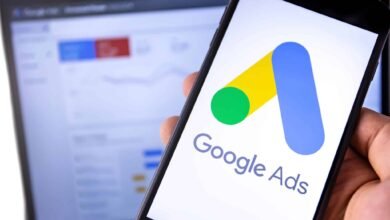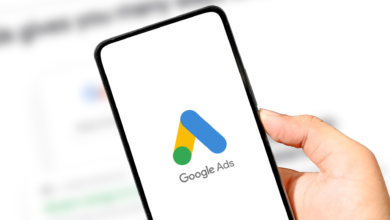B2B Brands Ditch Keywords for Performance Max

▼ Summary
– Performance Max campaigns are increasingly outperforming and replacing some keyword-targeted campaigns based on data-driven testing and optimization.
– AI-forward advertising strategies like Performance Max and Demand Gen are becoming essential due to changes in user behavior and Google’s AI features.
– Combining brand trust campaigns with performance campaigns creates a holistic approach that builds awareness and drives conversions simultaneously.
– Early adoption and continuous testing of AI-powered tools are crucial for staying competitive, despite initial resistance or mixed results.
– The advertising landscape is shifting toward AI-powered campaigns, requiring marketers to adapt their strategies or risk falling behind competitors.
A noticeable transformation is underway in the world of B2B digital advertising, where Performance Max campaigns are increasingly taking precedence over traditional keyword-targeted strategies. This shift isn’t just a fleeting experiment; it’s a data-driven evolution that forward-thinking marketers are embracing to capture growth in a changing landscape.
Recently, two account managers on my team, working with entirely separate clients in different sectors, independently reached the same conclusion. After extensive testing and careful analysis, they found that Performance Max was consistently delivering stronger results than their established keyword campaigns. This wasn’t a hasty decision but a strategic move backed by months of performance data. While we aren’t witnessing the complete death of keywords, we have undoubtedly entered an era where some advertising accounts are no longer dominated by them. When experienced PPC professionals, who built their expertise on keyword optimization, start advocating for this change, it’s a clear signal that the industry is moving in a new direction.
The environment for digital advertising has fundamentally changed. The rise of AI Overviews in search results, growing user adoption of Google’s AI Mode, and shifting consumer behavior across YouTube and other platforms mean that the way people discover information and make purchasing decisions is different. If user engagement has evolved, shouldn’t our campaign management strategies evolve as well? This year marks a turning point where AI-forward advertising is no longer optional but essential for staying competitive. Early adopters of Performance Max, Demand Gen, and the newer AI Max are already seeing the benefits, while those hesitating risk falling behind.
Many B2B companies are discovering that a singular focus can create problems. Those overly reliant on performance marketing often face a deficit in brand trust, while businesses that only invest in awareness campaigns struggle to generate conversions. The solution isn’t to choose one over the other but to integrate both. What we used to call “awareness campaigns” are more accurately described as brand trust campaigns. Consistently appearing across multiple platforms builds more than just visibility; it fosters a belief that your brand is credible and capable of solving customer problems.
While platforms like LinkedIn and Meta are often central to brand-building discussions, Google’s AI-powered Demand Gen campaigns deserve significant attention. These campaigns leverage first-party data and website engagement signals, uniquely allowing for lookalike audience targeting across the web. With compelling visuals and video content, they operate like high-performing social ads that drive strong engagement and improve brand recall. When you combine these brand trust campaigns with Performance Max, which is poised to appear within AI Overviews and across Google’s entire network, you construct a resilient and powerful advertising program.
The transition away from keyword-dominant strategies is a gradual process. In the accounts I mentioned, the move didn’t happen overnight. We started by using a keyword-based approach for our clients’ most critical services, while testing Performance Max for secondary offerings. The promising outcomes led to increased budgets and, after several months, the data spoke for itself: Performance Max was delivering superior conversion rates and sales. We then integrated top-tier services into our PMax campaigns to supplement our existing search efforts. For many accounts, Performance Max and keyword campaigns can work in harmony, but the clear trend is that Performance Max is earning a larger share of budget and delivering more substantial results.
Consider what these AI-driven campaigns accomplish. They create multiple touchpoints for your brand across Search, Google’s Display Network, and YouTube. By the time a potential customer is ready to make a purchase, they might search for your brand name directly or use a high-intent keyword, and your Performance Max campaign will be present. Crucially, you will have already established awareness, built trust, and nurtured consideration long before that final search occurs.
Google’s latest innovation, AI Max for Search campaigns, represents the next step in this evolution. Early testing in our accounts shows mixed results, which is typical for a new product launch. However, the initial hesitation mirrors what we observed when Performance Max was first introduced. What makes AI Max particularly interesting are its new features, including location interest targeting at the ad group level and enhanced brand controls. These are significant developments that indicate the future direction of Google’s advertising technology.
A common refrain from those resistant to change includes complaints that Performance Max didn’t work initially, concerns about irrelevant search terms, or a reluctance to relinquish control. I understand this apprehension. Allowing an algorithm to optimize your advertising creative and budget allocation requires a significant leap of faith. Yet, every major Google product release faces similar skepticism. The advertisers who ultimately succeed are those who embrace these tools early, commit to thorough testing, and persevere through the initial learning phase. Dismissing Performance Max based on outdated tests is a mistake; the platform has matured, offering greater control, transparency, and more ways to steer the algorithm toward your specific objectives.
To prepare for an AI-first future in advertising, you need to take proactive steps. Begin by auditing your current campaigns. If you are still relying exclusively on keyword-targeted ads, launch a Performance Max campaign alongside them and compare the performance over a minimum of two months. Simultaneously, invest in building brand trust through campaigns on Demand Gen, LinkedIn, or YouTube. High-quality video and image assets that communicate your brand’s value and reliability are no longer optional; they are fundamental for AI-powered campaigns to perform effectively.
Cultivate a test-and-learn mentality. Understand that some tests require weeks or even months to stabilize and yield meaningful insights. We have paused underperforming tests only to revisit them later and achieve better results as the platforms evolved. Finally, stop viewing these AI tools as threats to your control. Instead, see them as instruments that can expand your reach and enhance your outcomes. The core principles of effective marketing, compelling messaging, deep audience understanding, and excellent content, remain vital. AI simply empowers you to connect with more of the right people, more efficiently.
The future of Google Ads belongs to those who adopt an AI-forward approach. Real-world account data consistently supports this trend. Advertisers who are actively testing, learning, and adapting are achieving measurable success. Those who wait for absolute certainty or cling to outdated methods are losing valuable ground. You don’t need to overhaul your entire strategy immediately, but you must begin testing. Commit to navigating the learning curve, understanding that initial results may be modest, but both the platform and your performance will improve over time. The industry is moving forward rapidly. You can choose to adapt and find a faster route to growth, or you can wait and arrive late to the opportunity. My team and I have chosen to move forward, embracing continuous testing and learning, because in digital marketing, standing still is the surest way to fall behind.
(Source: Search Engine Land)





